

How to play guide
Know Your Playing Field
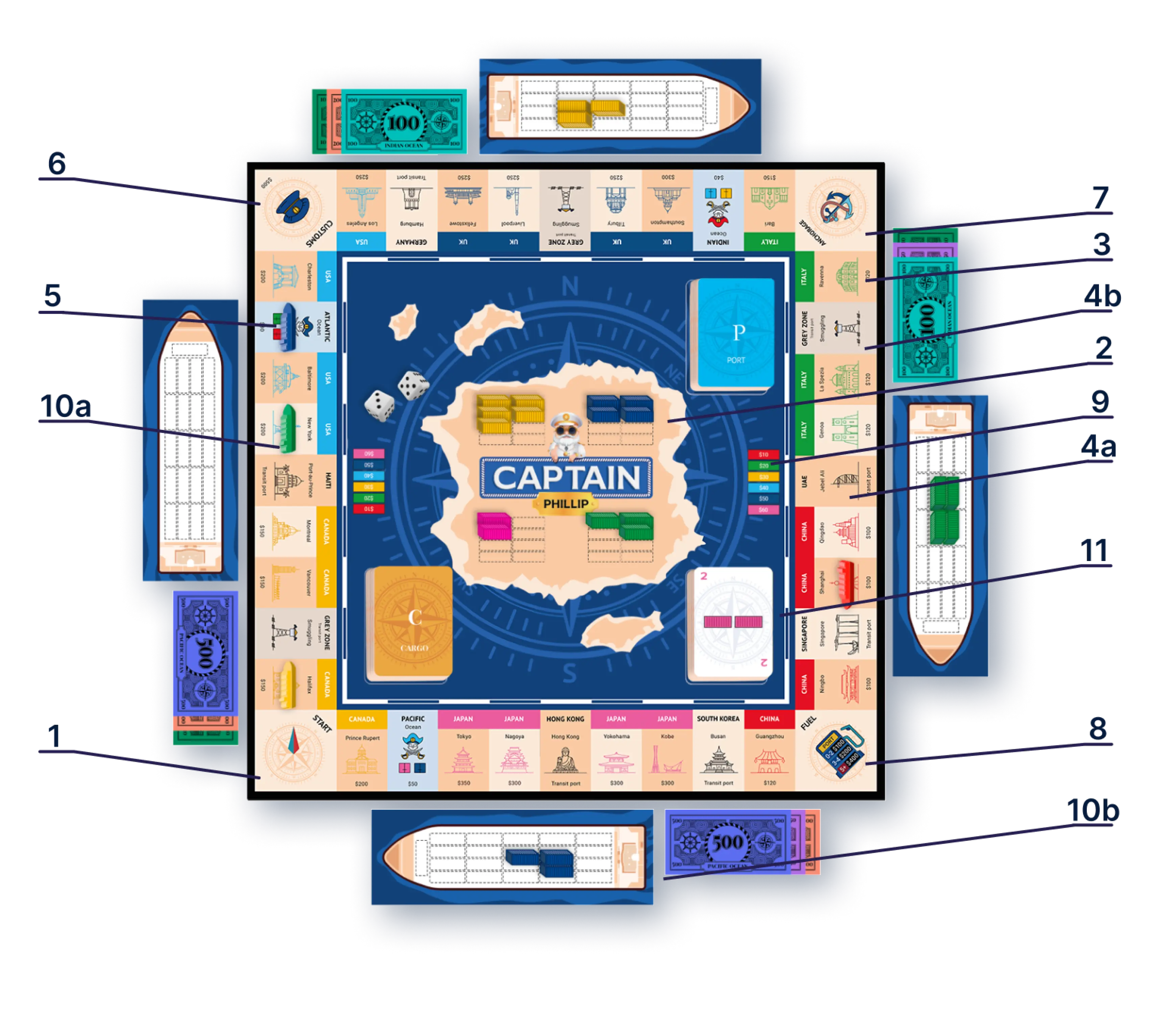
- Start point
- Container Terminal
- Colored Ports
- Transit ports
- Jail
- Port change
- Pay for fuel as you pass
- Chance
- Container price list
- Ship token
- Ship deck
- Cargo cards (after unloading)
- Chance cards
- Cargo cards
- Port cards
- Shipping containers
Know Your cards
Cargo Cards: These cards determine how many containers and of which color you can load or unload from your ship. Cargo cards must always accompany their corresponding containers:
- When containers are loaded, they must match the quantity and color shown on the cards, and the cards must be in the player’s hand.
- When containers are unloaded to a terminal, place the matching Cargo cards next to them on the game board.
If containers are returned to the Bank, the Cargo cards go to the bottom of the Cargo deck.
.webp)
.webp)
Port Cards: Port Cards show where to deliver containers of a specific color and the reward per unit.
During loading, a player may optionally draw one Port Card. Unloading is allowed only if the player has a Port Card that matches either the port’s name or the color of the containers being delivered. After a successful delivery, return the used Port Card and optionally any others of the same color to the bottom of the deck. Port Cards cannot be used in transit ports, either for loading or unloading.
Smuggling Cards are a special type of Port Card, valid only in transit ports. They allow delivery of specific containers for a fixed reward and must be returned to the bottom of the deck after use.
If the terminal is full, smuggled containers may be offloaded to the Bank for free to clear space on the ship. No reward is given in this case.
Note: Smuggling Cards work similarly to regular Port Cards, but apply only in transit ports
How to win
There are two ways to win:
- Be the last remaining player by avoiding bankruptcy
- Collect containers of the same color on your deck
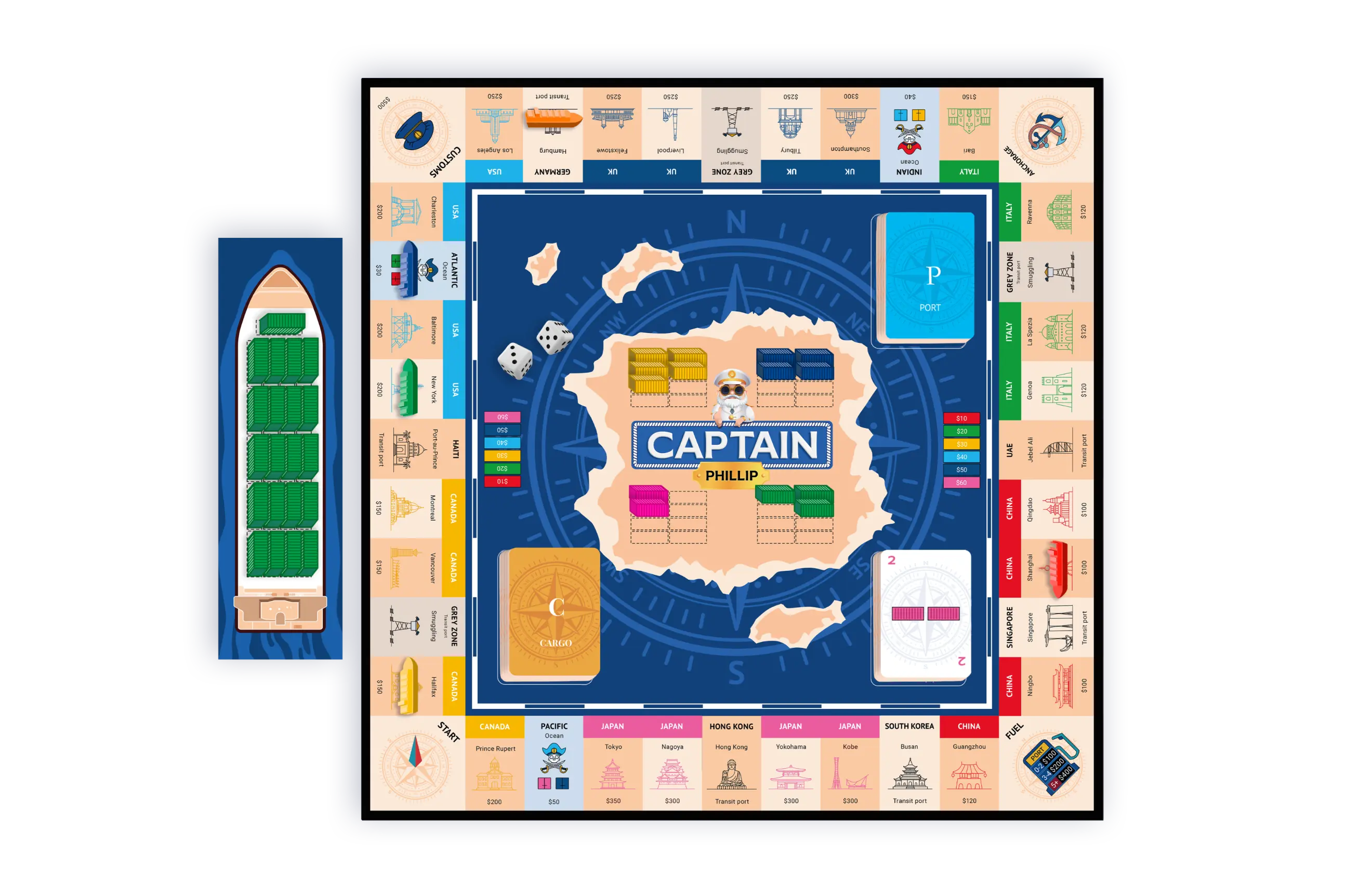
How to Play
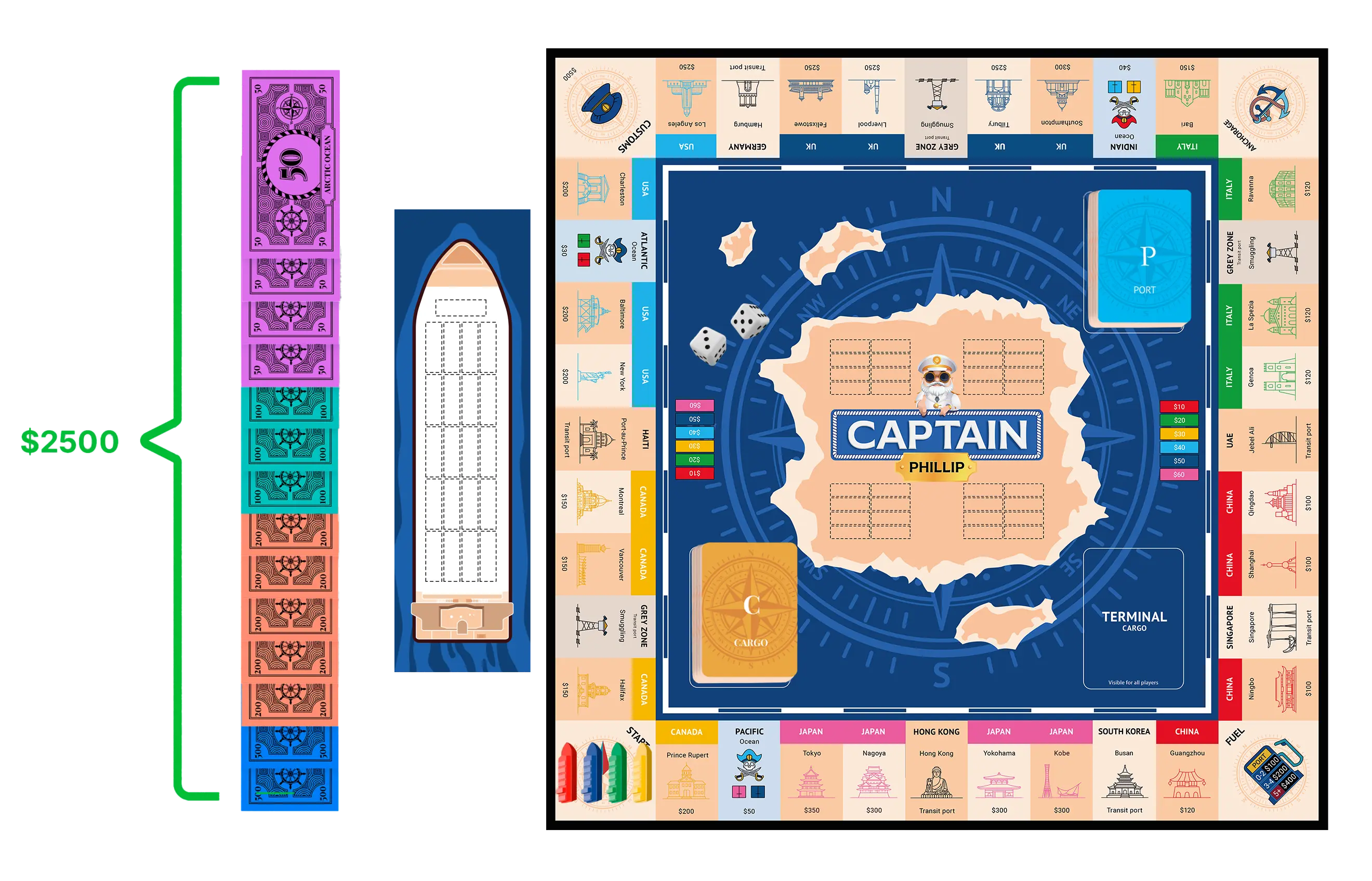
1. Objective of the Game
Captain Phillip is a board game for 2 to 6 players about sea shipping and making profit. Players earn money by delivering containers to colored ports according to their “Port” cards, which show the reward for a successful delivery.
At each port, a player must perform at least one action — either loading or unloading. If neither action is taken, the player pays a penalty.
Setup: Shuffle the “PORT”, “CARGO”, and “CHANCE” cards and place them face down on the board. Each player takes a ship deck, chooses a ship token, places it on “START”, and rolls the dice to see who goes first. Before the game begins, distribute $2500 among all players. Designate one player as the banker to manage the funds.
2. Game turn
On your turn, roll the dice and move your ship token clockwise on the board. The field you land on determines your action. Multiple ship tokens can occupy the same field simultaneously.
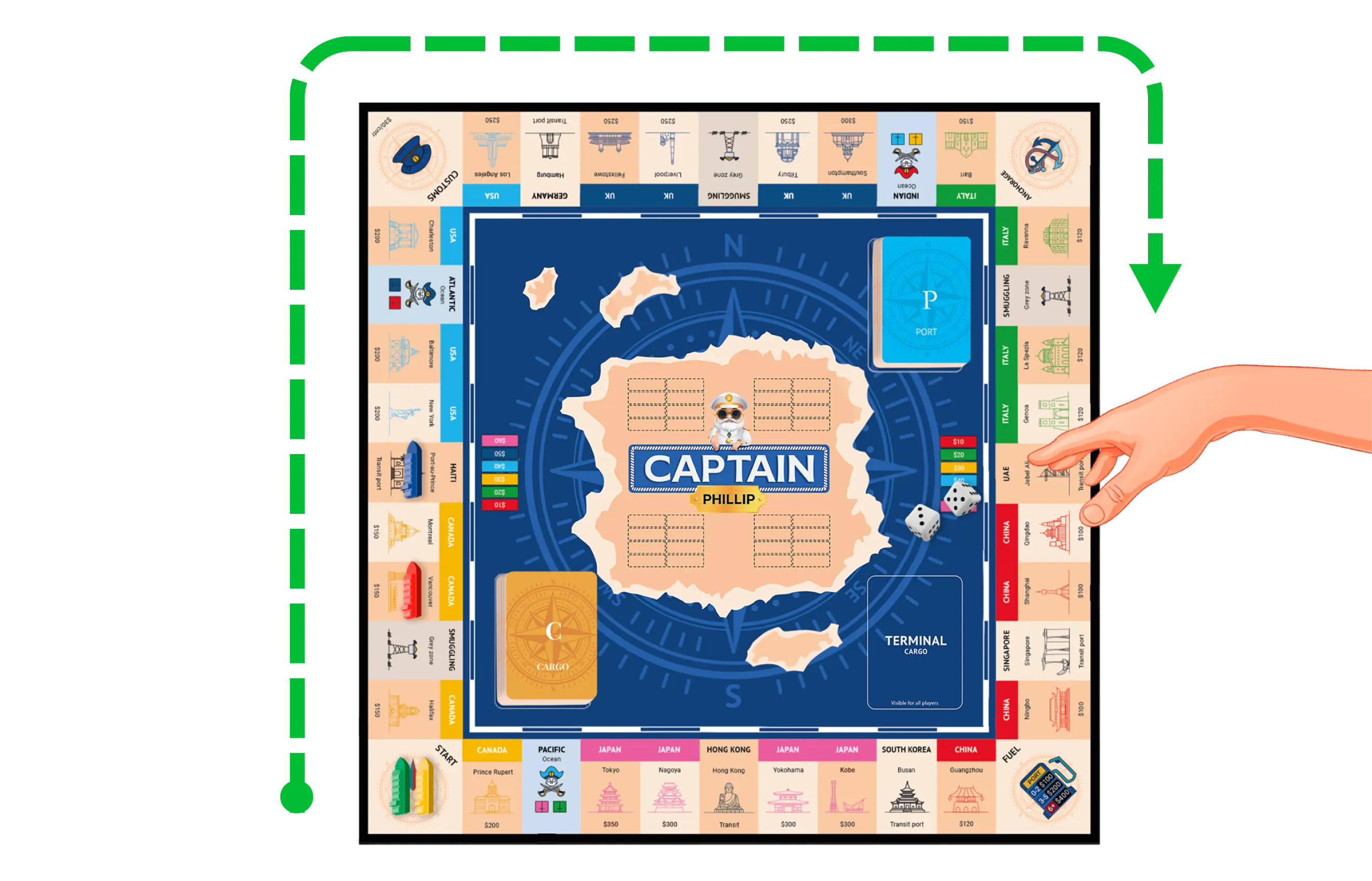
The player's token landed on the colored port
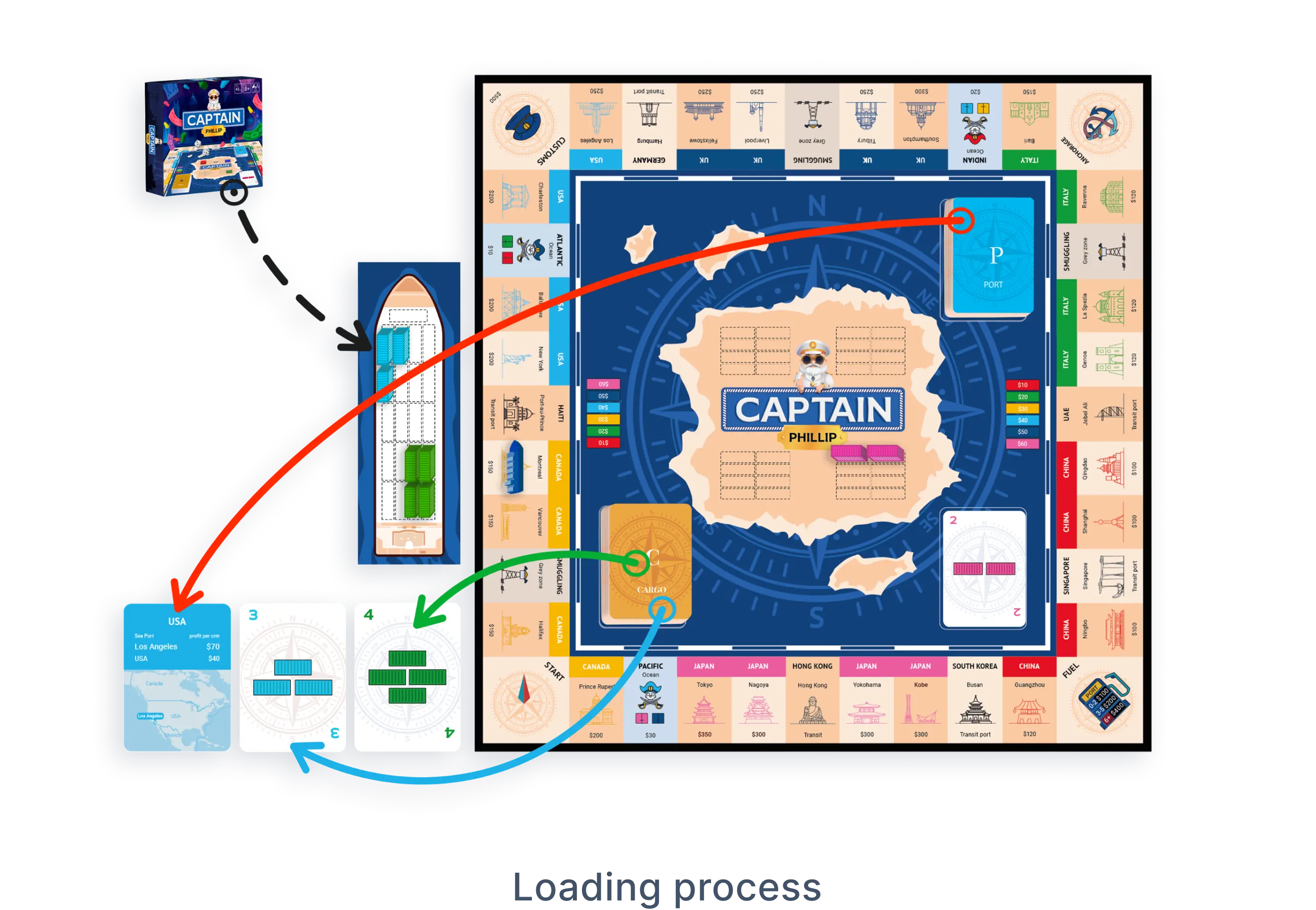
1. Loading
When a player lands on a colored port, they may unload and/or load containers.
Unloading must be done first, followed by loading. Players must perform at least one of these two actions. If neither is possible due to lack of space on the ship or terminal, the player must pay the penalty shown on the current port space.
At the start of the game, ships are empty, so players begin by loading:
Draw cards one at a time from the CARGO deck until you choose to stop. If the number of containers drawn exceeds your ship’s available space, return all cards to the bottom of the deck and pay the penalty listed on your current port. Once you’ve successfully loaded containers onto your ship, you may take one Port card. This card shows the destination port and the profit you’ll earn for each matching container delivered there.

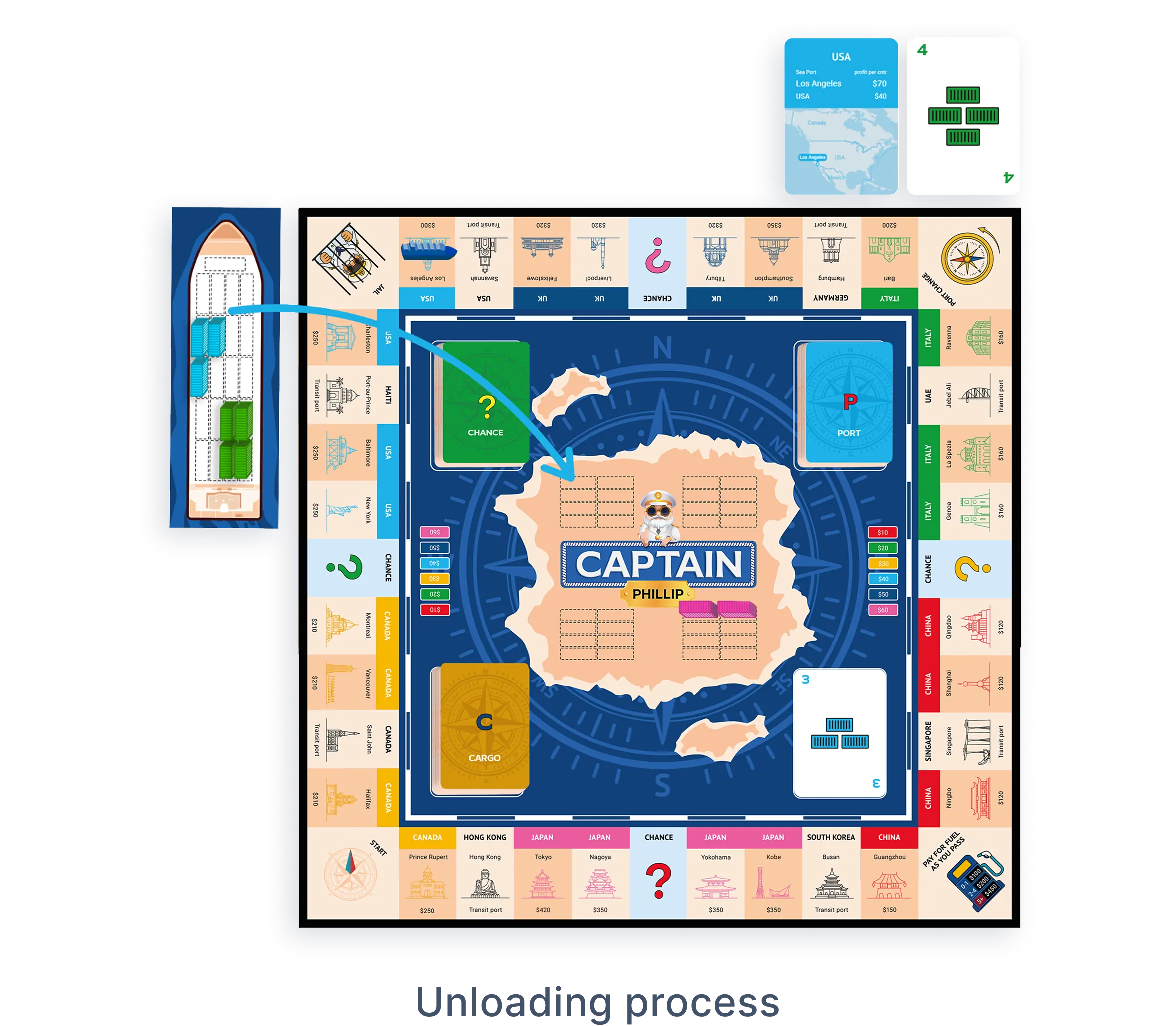
2. Unloading
If space is available, move the containers to the terminal. Place the used CARGO cards face up on the TERMINAL, and return the PORT card to its deck.
Delivering containers to the exact port shown on your Port card gives you the highest profit. Other ports in the same country offer lower payouts.
In this case, the token landed on Los Angeles, earning: $60 × 3 = $180
Unloading works like loading, but in reverse: Place CARGO cards face up on the terminal, move the containers from your token to the terminal, and return the Port card to its deck. Then collect your reward from the Bank and wait for your next turn.

At a port, the player must perform at least one operation: either unloading, loading, or both. If the player cannot perform either action, they must pay the penalty shown on the game board. No penalty applies in transit ports. If both actions are possible, unloading must be done first, followed by loading.
The player's ship landed on the transit port
Transit ports
When a player’s ship lands on a transit port space, they may freely load and/or unload any number of containers between the terminal and their ship’s deck — without using Port cards.
Unloading begins by moving containers to the terminal. Unlike colored ports, the corresponding Cargo cards are placed face up on the board, matching the number of unloaded containers.
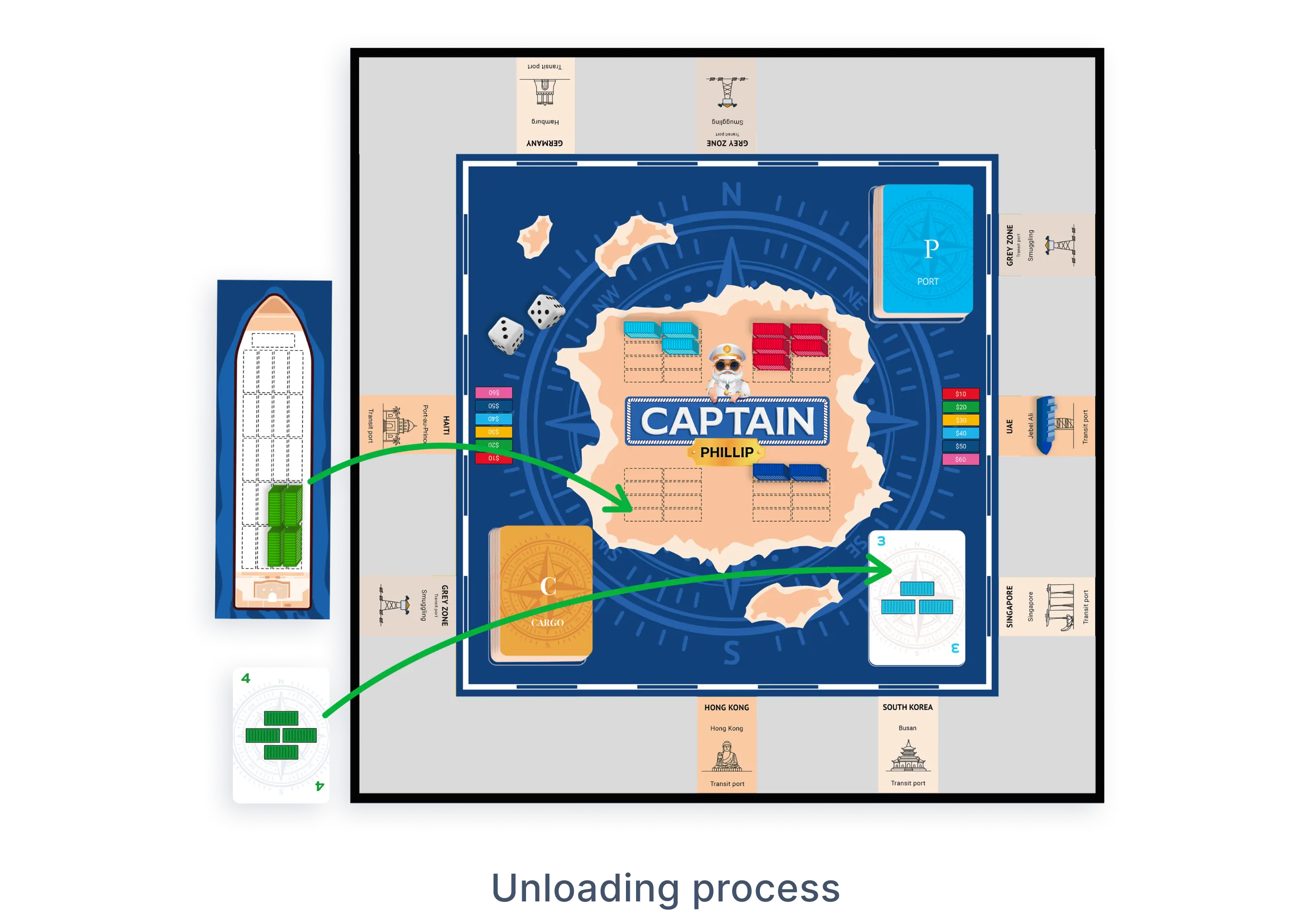

Loading is done only from the terminal. The player may choose any quantity and color of available containers at their discretion. Selected containers are moved to the ship’s deck, and the player must take the matching Cargo cards. The number and color of containers loaded must exactly match what is shown on the Cargo Card.

In transit ports, just like in colored ports, players must perform at least one of two actions: loading or unloading. However, if players are unable to load or unload due to a lack of space on the deck or in the terminal, no penalties will be applied in transit ports.
Other fields on the playing field
Start point
START is the space where all players place their tokens at the beginning of the game. When a player lands on or passes this space during the game, no action is required. Simply wait for your next turn.
Port change
Land here to return or exchange any number of Port cards from your hand:
- You may return all or some cards to the bottom of the deck.
- For each card returned, you can choose to draw a new one or not.
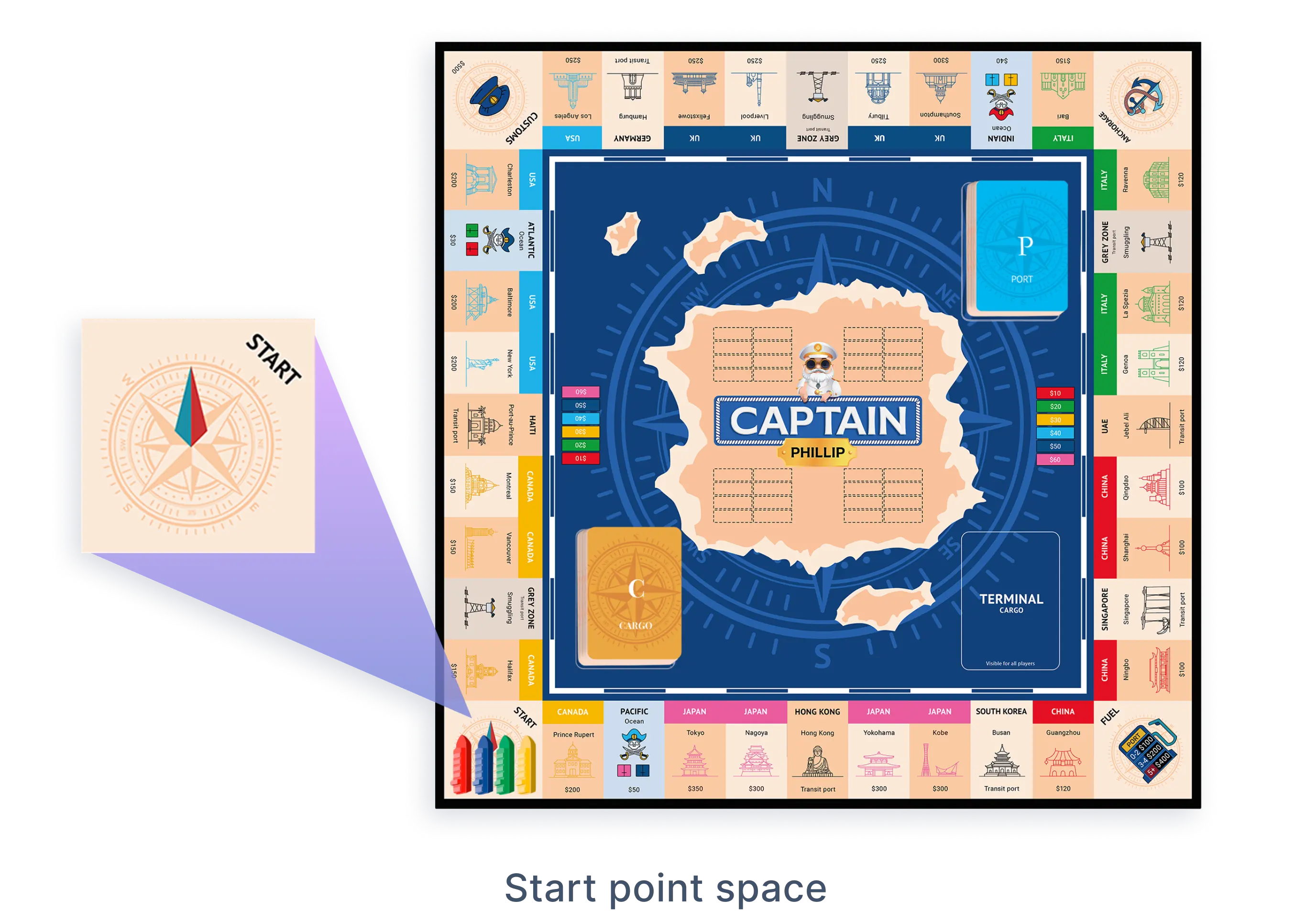
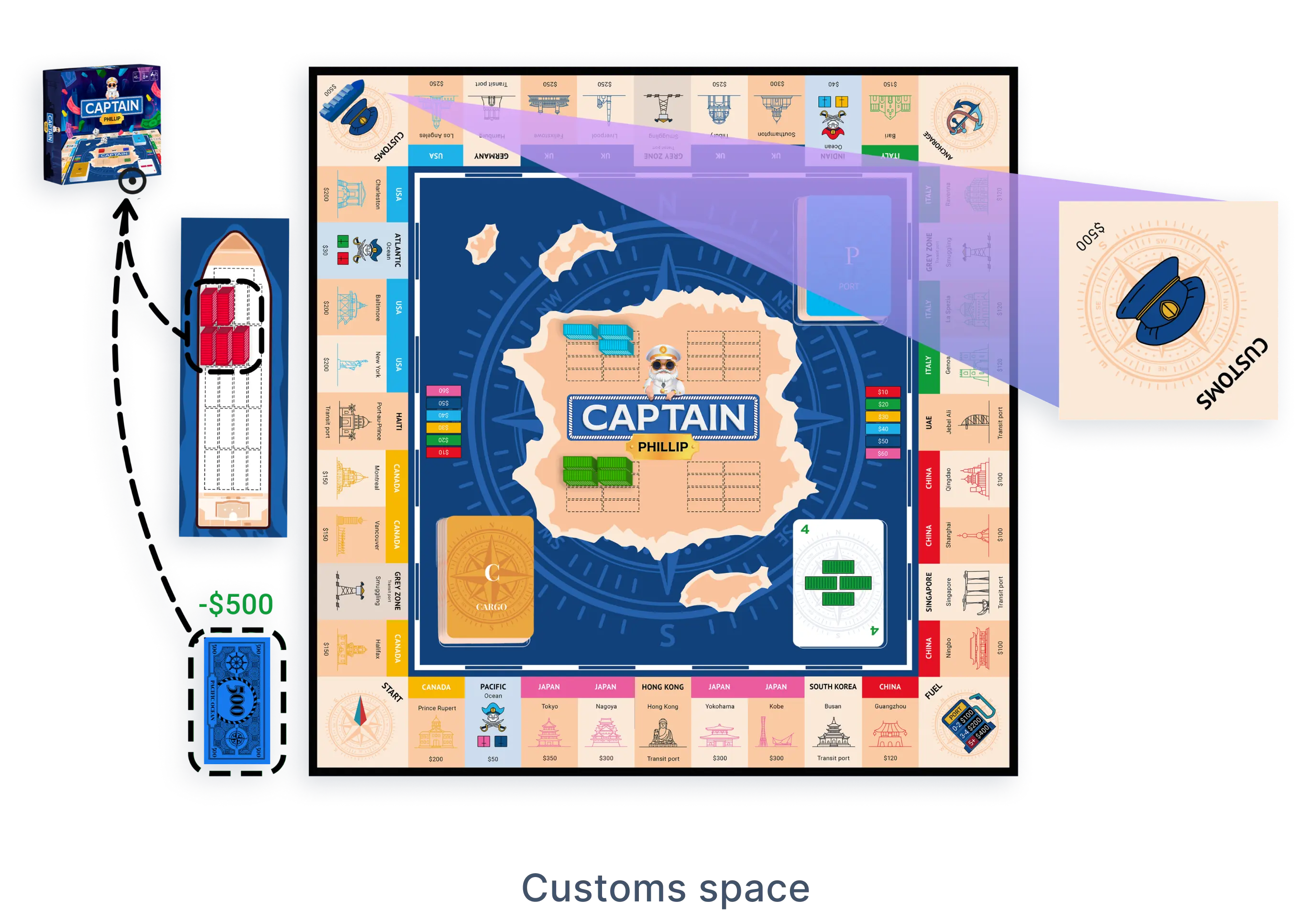
Jail
Skip a turn. If a player’s token lands on this space, they must skip one turn and then continue the game as usual.
Refueling your ship
Each time you land on or pass the Fuel space, you must pay for fuel. The cost is based on the number of Port cards you hold. Check the price chart on the board and pay the Bank. Tip: More ports = more fuel. Plan ahead!
Here are dont’s of the game
- Do not stack containers on the ship’s deck or the terminal.
- You may not take money from the Bank or other players as a loan.
- Do not exchange Cargo cards or containers with other players.
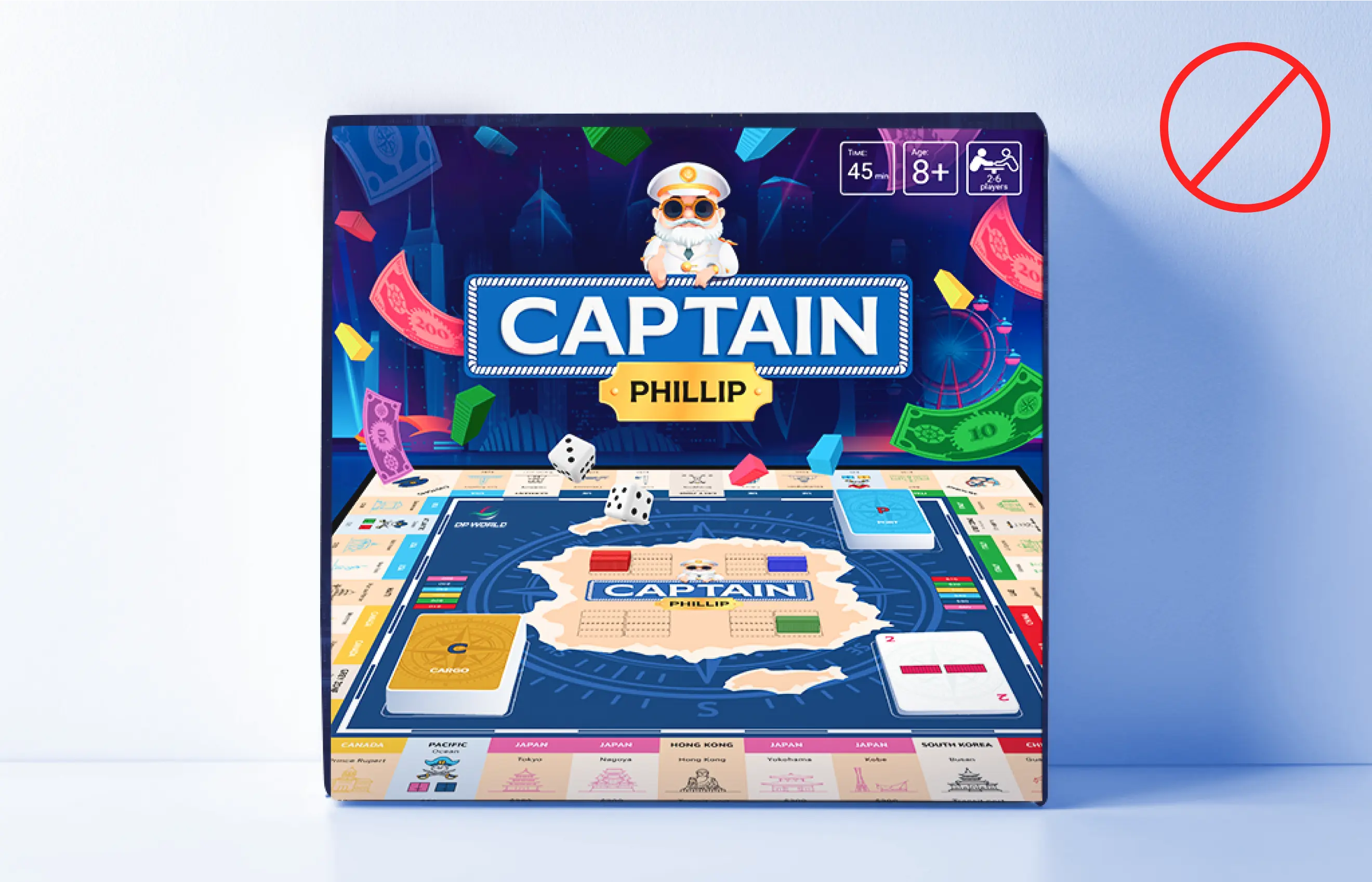
Subscribe for updates
Subscribe to get monthly updates, special offers, and news on upcoming products!